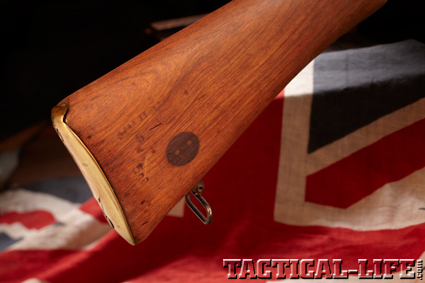Whenever I see one of these rifles, I am reminded of that stereotypical British sergeant major portrayed countless times on the silver screen: tough, rugged, maybe just a bit ugly, and very, very good at what he does. What am I talking about? Why, one of the most famous and widely recognized military small arms of all time: the Short Magazine Lee-Enfield No. I Mark III. Often referred to in official documents as the SMLE, and known affectionately to generations of British Tommies as “Old Smelly,” the No. 1 Mark III rifle would go on to become as famous as the red-coated grunts who conquered, pacified and policed the greatest empire this planet has ever seen.
Hard Lessons Of War
The Second Anglo-Boer War (1899–1902) was only the second time in history that civilized troops, armed with smokeless-powder repeating rifles faced each other on the battlefield (the first being the Spanish–American War of 1898). During the conflict, their Afrikaner foes taught the British a series of rude but eye-opening lessons during the fighting in the African veldt. British troops armed with the Magazine Lee-Enfield Mark I and I* rifles (aka the “Long” Lee-Enfields), with their manually loaded magazines and ballistically unimpressive .303 Mark VI rounds, found themselves outgunned by Boer commandos armed with Paul Mauser’s charger-loaded Model 1895 rifle chambered for 7x57mm, the high-performance cartridge of its day. In a war where mobility, rapid fire and long-range marksmanship played prominent roles, the Lee-Enfield was found lacking, forcing the English to concede that their weapons, training and tactics all needed improvement.
After the war, a number of proposals for improving the Lee-Enfield were put forth: a charger-loaded magazine, sturdier sights, and a shorter length so one rifle could be used by both infantry and mounted troops. The Royal Small Arms Factory (RSAF) at Enfield Lock produced a series of trial rifles that featured shorter barrels, sight guards, charger loading guides machined into the bolt head and receiver wall, and a safety lever on the left rear of the receiver. When the design was finalized, a magazine cutoff very similar to that of the earlier Long Lee-Enfields was fitted. In late 1902, the design was approved as the Short Magazine Lee-Enfield Mark I…
Advertisement — Continue Reading Below
GET THIS ISSUE NOW! at www.tactical-life.com/subscribe/military-surplus/.












































